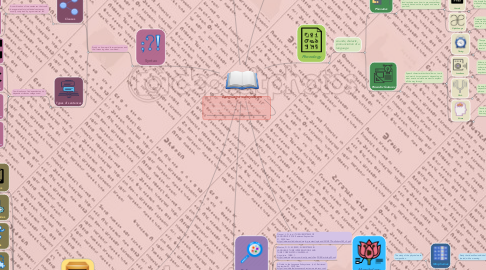
1. the core composition and characteristics of language, they are what makes a language a complex communication system
2. Lexicology
2.1. Study that sorts and categorizes words relying on their function.
2.1.1. Nouns
2.1.1.1. A word that refers to a person, place, thing, event, substance, or quality.
2.1.1.1.1. Noun phrases
2.1.2. Auxiliaries
2.1.2.1. Words that provide information or support to a verb.
2.1.3. Verbs
2.1.3.1. Words that indicate actions.
2.1.3.1.1. Verb phrases
2.1.4. Conjunctions
2.1.4.1. Words that connect others.
2.1.5. Pronouns
2.1.5.1. Replacement of a noun according to gender for reappearance avoidment.
2.1.6. Adjectives
2.1.6.1. Words that offer defining characteristics and attributes to nouns or noun phrases.
2.1.7. Adverbs
2.1.7.1. A word that works as an adjective for verbs or phrases.
2.1.8. Prepositions
2.1.8.1. Words that give attributes of spatial orientation and are often used to link other words.
3. Syntax
3.1. Study on how word form sentences and their meaning when combined.
3.1.1. Words and phrases
3.1.1.1. A mix and match of morphemes and lexicology used by native speakers, broken down to their composition into distinctive categories then into smaller units and so on
3.1.2. Clauses
3.1.2.1. A combination of two sentences that could be separated into individual sentences, usually conjoined by a grammatical link.
3.1.2.1.1. Independent clause
3.1.2.1.2. Dependent clause
3.1.3. Types of sentences
3.1.3.1. Combinations of independent and or dependent clauses categorized.
3.1.3.1.1. Simple sentences
3.1.3.1.2. Complex sentences
3.1.3.1.3. Compound sentences
3.1.3.1.4. Compound-complex sentences
4. Semantics
4.1. The study that looks for the reason and relation of what makes a language, such as sounds and symbols and its meaning.
4.1.1. Denotative meaning
4.1.1.1. Theoretical and objective meaning, such as official definitions.
4.1.2. Connotative meaning
4.1.2.1. A meaning that’s subjective to context.
5. References
5.1. Govoni, J. G. (n.d.). THE SUBSYSTEMS OF LANGUAGE. ESOL. Retrieved September 21, 2020, from https://www.esolinhighered.org/wp-content/uploads/2014/07/TwoSubsysCh5_v2.pdf
5.2. Mouton, D. G. M. (2009). SUBSYSTEMS IN LANGUAGE, THEIR INTERRELATIONS AND THEIR CORRELATED UNIVERSALS. Linguistics, 10(88), 1. https://www.degruyter.com/view/journals/ling/10/88/article-p53.xml
5.3. A Guide to the Language Subsystems. (n.d.). Retrieved September 22, 2020, from https://aguidetothelanguagesubsystem.wordpress.com/
5.4. U. (Ed.). (2003). Interactive IPA Chart. Retrieved September 22, 2020, from https://www.ipachart.com/
6. Phonology
6.1. sounds, dialects, pronunciation of a language
6.1.1. Phonetics
6.1.1.1. Revision of sound themselves, research and work based on the International Phonetic Alphabet, a system that sets symbols to specific sounds found in human language (and techniques on how to pronounce them correctly based on the tongue’s and mouth position)
6.1.1.1.1. Consonants
6.1.1.1.2. Vowels
6.1.1.1.3. Diphthongs
6.1.2. Prosodic features
6.1.2.1. Speech characteristics that allow us to mix and match its components depending on what emotional state we want to express all the way through
6.1.2.1.1. Timing
6.1.2.1.2. Loudness
6.1.2.1.3. Pitch
6.1.2.1.4. Stress
7. Morphology
7.1. The study of the physical word composition.
7.1.1. Morphemes
7.1.1.1. Study that identifies individual speech units (words) with a meaning.
7.1.1.1.1. Free morphemes
7.1.1.1.2. Functional morphemes
7.1.1.1.3. Bound morphemes
